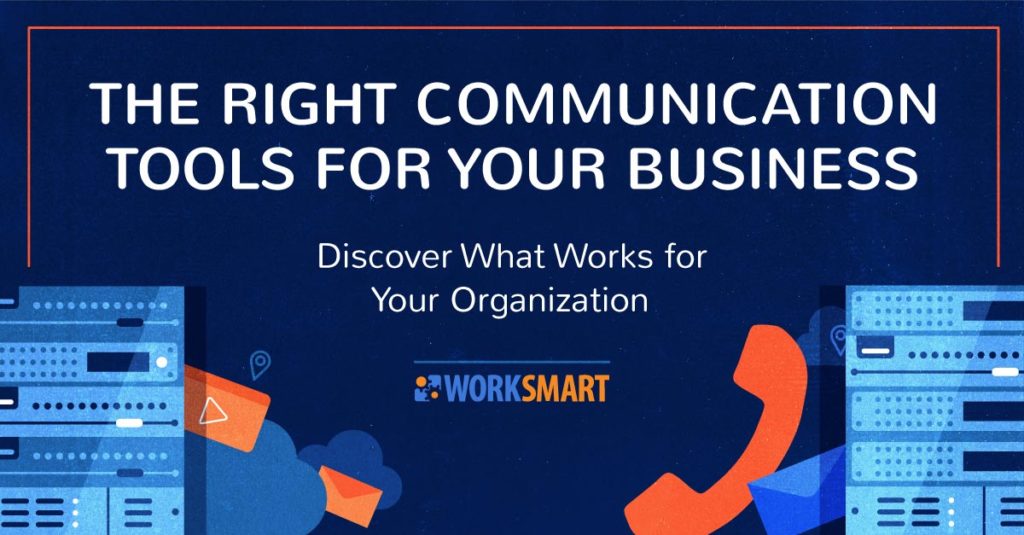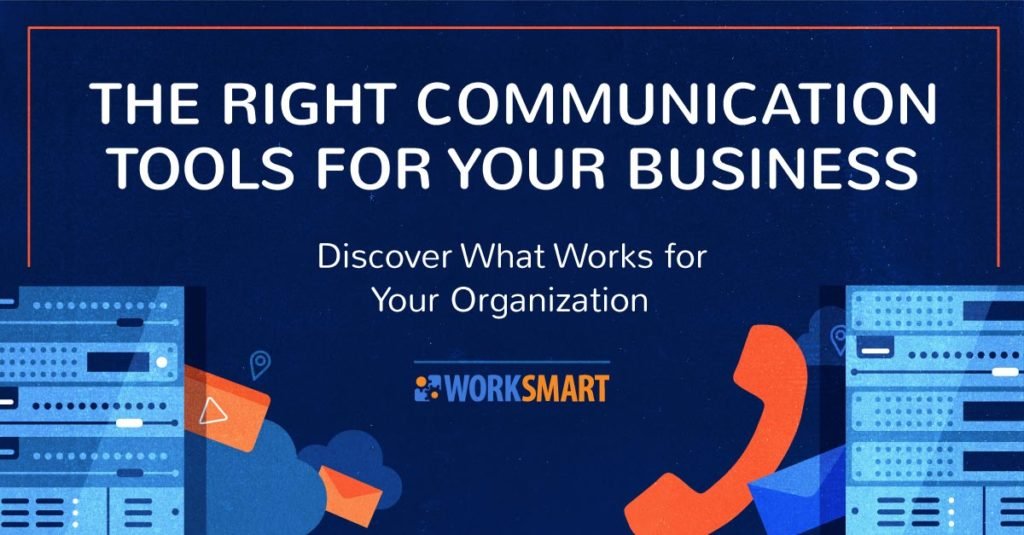In our last post we covered the access you need for your company to communicate best. Now we’re reviewing the tools we can use to connect with each other electronically, and personally.
CONNECTING ELECTRONICALLY
Our favorite way to communicate at work is electronic. Email and instant messaging are the first tools we use to share information and connect with our coworkers, even if they’re in the same building.
Your organization has a choice of email and IM platforms. If you haven’t thought about whether or not your current tools are the best for you, we can help you work through important considerations for your organization. Like, does it meet all your security and retention guidelines? Is everything backed up so your users can rescue lost messages? Is it cloud-based? Does it work well with the other business apps you use?
OFFICE 365 is our recommended EMAIL platform for clients, by far. If you’re still using onsite email, we recommend you consider migrating to the cloud. And we really (really) recommend an additional backup solution to make sure messages and files deleted can be recovered. Office 365 highlights include:
-Solid security options, including advanced threat protection.
-Can use your Active Directory single sign-on for O365 and Azure (cloud-based servers).
-Strong redundant solution to maintain availability across geographies if one site goes down; 99.9% uptime SLA.
-Desktop and web versions of apps like Excel, Word, PowerPoint and Outlook for easy file sharing and collaboration.
-Can work offline.
-Video calls currently through Skype for business, but Skype is being phased out and Teams will take over.
When it comes to INSTANT MESSAGING apps, there are more possibilities.
Office 365 offers TEAMS, and we use Teams at WorkSmart for quick responses and group messages, without clogging email inboxes. Microsoft has set its IM future on Teams, replacing Skype for Business with the Teams app. If you’re an Office 365 user, then Teams makes it easy to integrate with the other O365 tools.
At WorkSmart, we have a mix of needs that Teams helps to meet. We have different office locations, some 100% remote employees, and consultants who spend much of their days at client sites. We need to collaborate seamlessly between all of those, and we often need quick responses when dealing with critical IT issues. We have channels set up for group conversations, and one-on-one (or small group) chats are easy. If your team collaborates in OneDrive documents, Teams can connect to those easily.
YAMMER (another Microsoft product) doesn’t replace Teams, but can be used as an additional tool for company-wide announcements and broader engagement for big initiatives.
Google offers HANGOUTS CHAT. Hangouts started as more of a consumer product, but Google is shifting Hangout to be enterprise-focused as an all-in-one voice/chat/video chat option. If your organization uses Gmail, be sure to take a look at what Hangouts has to offer now.
SLACK launched in 2013, and gained real traction with businesses and users in 2015. In fact, Microsoft launched Teams to compete with Slack’s success. Slack is customizable and is an easy-to-use messaging tool, but it doesn’t come with any native applications (like Microsoft’s Teams native connection to OneNote or Outlook). All applications have to be third-party. But if you’re already using non-Microsoft apps, check to see if Teams or Slack integrate with them before you decide on the best messaging app for your organization. And if you’re using Office 365, Teams may be available to you at no additional cost.
CONNECTING PERSONALLY
Despite our love of technology, WorkSmart emphasizes in-person time as much as possible. In-person connection is part of why WorkSmart has been a successful IT partner for organizations like yours since 2001.
When you can’t be in person, the next best options are web conferencing and phone calls.
You may already have a subscription to one of the popular WEB CONFERENCING tools: Skype and Teams from Microsoft, WebEx from Cisco, GoToMeeting from LogMeIn, BlueJeans, JoinMe, or Zoom. Your choice depends on things like whether your organization mostly needs a video chat tool or a video-conferencing tool and what collaboration tools you already use. If your users are accustomed to a certain tool, or you find one that will be easy for them to use, that may be the most important deciding factor.
Tools can vary on how many concurrent calls are possible and how many people can join one call, among other small differences. If you use Office 365, you have video conference capabilities through Skype and Teams already. All of the web conferencing tools offer free trials, and we can help you test a meeting to check out the user interface with you.
If you need a video conferencing system for conference rooms, let us know and we can put together an AV recommendation specific to your needs.
Here’s what you need to know if you’re considering a cloud-based phone system, like HOSTED VoIP (Voice over IP) or if your current on-premise phone system needs replacing.
{{cta(‘27473f10-94eb-46b1-a3f2-c28b78871d3d’,’justifycenter’)}}
A hosted phone services offers flexibility, like a monthly fee rather than a large up-front purchase, utility-style billing, and the ability to add or remove features and users easily. Hosted services are always adding features, so you’re more likely to adopt new features rather than having to wait until you need new service.
Before you choose a VoIP provider, you’ll need to conduct a network survey to make sure it can handle VoIP. Your network also must meet wiring specifications of at least cat5e or cat6. And you need either POE (Power over Ethernet) switches or you’ll need to purchase a power supply for the phones.
There are a lot of VoIP providers, and we can help make a recommendation based on your requirements. There are also pitfalls we can help you avoid, like how VoIP calls will interact with your other Internet usage, and how quality could be impacted.



